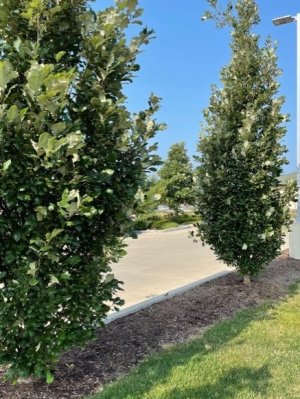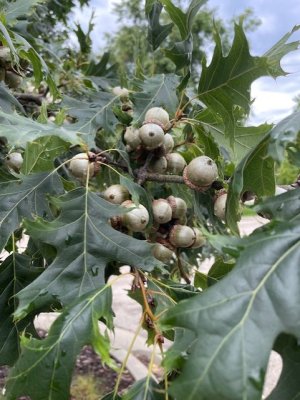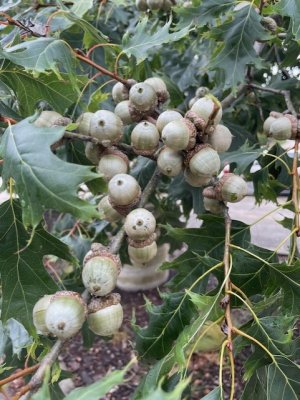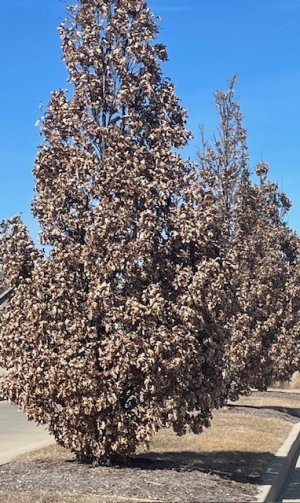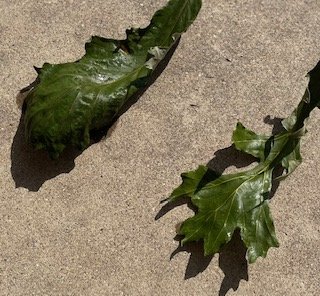Oak trees and chestnut trees are acid loving trees that need more than the big 3 (N<P<K) if you want maximum acorn/chestnut output. There is the issue of micro-nutrients ....
Fertilizing Landscape Trees ED PERRY, Horticulture Farm Advisor, University of California Cooperative Extension, Stanislaus County;
GARY W. HICKMAN, Horticulture Farm Advisor, University of California Cooperative Extension, Mariposa County
INTRODUCTION
Sixteen fertilizer elements are required for plant growth. Three of the elements—carbon(C), hydrogen (H) and oxygen (O)—are provided by air (through CO) and water(H2O). In the soil, ---plant roots absorb the remaining 13 elements: nitrogen(N), phosphorous (P), potassium (K), calcium (Ca), sulfur (S), magnesium (Mg), manganese(Mn), zinc (Zn), boron (B), copper (Cu), iron (Fe), molybdenum (Mo), and chlorine (Cl). The first six are termed macronutrients because the plant uses them in large amounts. The last seven are called micronutrients because they are used in much smaller quantities. The 16 elements are considered essential because
• in the absence of any one of these elements, the plant will fail to complete its life cycle
• each element is specific and cannot be replaced or substituted for by another element
• each element has a direct effect on the plant (rather than an indirect effect, such as repelling insects that might prevent the plant from completing its life cycle)
Nutrient deficiencies, especially deficiencies in nitrogen phosphorus, and potassium, are not common in most woody landscape plants, except in palm trees, which often develop nitrogen, potassium, manganese, and magnesium deficiencies.
Woody plants growing in soil-less media in containers can often develop nutrient deficiencies. When nutrient deficiencies do occur, they cause reduced shoot growth and leaf size, leaf chlorosis, and necrosis and dieback of plant parts.
I posted on the old QDM site that I used Miracle Grow orchid foot to feed oak/chestnut trees because I bought it as a closeout for 59 cents a box at Kroger. Orchid food sells for about $4 for 8 oz; however, Miracle Grow Azelea and Rododendron food contains the EXACT same elements and fertilizer - in the same proportions/sources as Orchid food - and it sells for $6 for a 1.5 lb carton. 3 X the food for only 50% more in price. Iron, and especially in a form that can be taken up by the tree, is the element for the acid issue.
tbc ...

